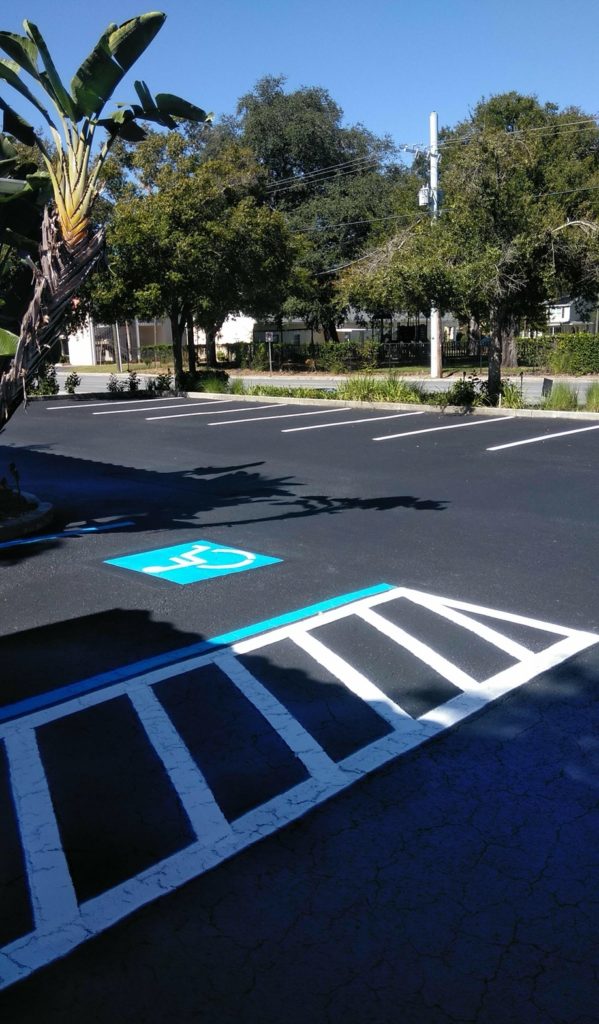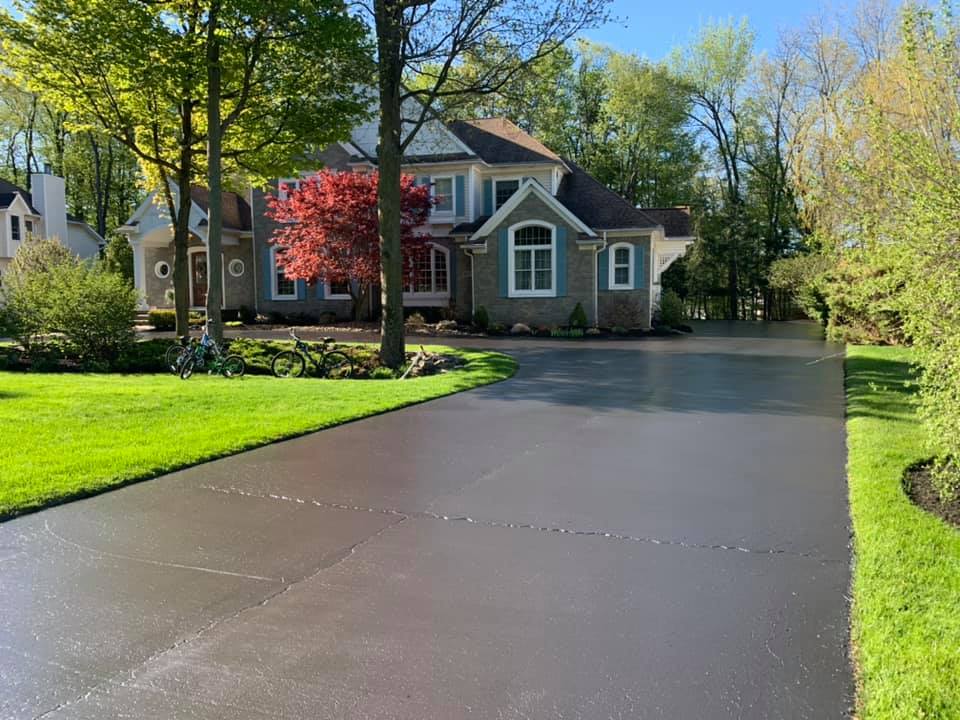Elevate Commercial Charm: Warm Mix Asphalt Sealing for Angled Parking Lots
Wiki Article
Warm Mix Asphalt: A Lasting Service for Pavement
Warm Mix Asphalt (HMA) has become a leading sustainable option for sidewalk remedies, using a myriad of ingenious modern technologies and environmental benefits. Its capacity to recycle products and lower energy usage presents an engaging case for its adoption in road building projects. In addition, the long-term efficiency and durability of HMA make it a preferred choice for infrastructure development. As the demand for green building practices grows, checking out the subtleties of HMA's sustainability can supply important understandings into the future of pavement services.Environmental Benefits of Hot Mix Asphalt

In Addition, Hot Mix Asphalt helps to alleviate city warmth island results. Its dark shade takes in sunshine, reducing the amount of heat mirrored back right into the environment contrasted to lighter-colored pavements. This can decrease ambient temperatures in urban areas, decreasing the demand for a/c and inevitably minimizing power intake.
Furthermore, Hot Mix Asphalt contributes to enhanced stormwater monitoring. Its permeable nature allows water to infiltrate the pavement and recharge groundwater products, lowering runoff and the risk of flooding. These ecological advantages make Warm Mix Asphalt a sustainable choice for leading roadways and freeways.
Energy Effectiveness in HMA Manufacturing
Is power effectiveness a crucial variable in the production of Warm Mix Asphalt (HMA)? Energy plays a significant duty in the manufacturing of HMA, affecting both cost and environmental sustainability. One essential facet of power effectiveness in HMA manufacturing is the usage of warm mix asphalt (WMA) innovations.In addition, innovations in plant innovations have led to even more energy-efficient HMA manufacturing procedures. By optimizing power usage in HMA manufacturing, the sector can lower its carbon footprint while preserving high-quality pavement materials.
Recyclability of Hot Mix Asphalt
The recyclability of Warm Mix Asphalt (HMA) is a critical element of its sustainability and long-term environmental impact. HMA is among one of the most recycled materials in the United States, with over 100 million lots of recovered asphalt sidewalk (RAP) being reused yearly in brand-new sidewalk construction. Recycling HMA offers a number of environmental benefits, such as reducing the need for virgin products, lowering power consumption throughout manufacturing, and reducing the amount of waste sent out to garbage dumps.The process of recycling HMA entails crushing the existing pavement, squashing it right into smaller items, and blending it with brand-new accumulation and asphalt binder to develop a recycled mix. On the whole, the recyclability of HMA plays a significant function in advertising sustainable methods within the pavement market.

Long-Term Efficiency of HMA
Asphalt pavements demonstrate durability and strength over an extensive duration, mirroring the long-lasting efficiency of Hot Mix Asphalt (HMA) Furthermore, advancements in HMA innovation, such as the use of polymer-modified binders and warm mix asphalt, have additionally boosted the resilience and durability of HMA pavements. By prioritizing quality building and construction and upkeep techniques, HMA proceeds to show itself as a cost-efficient and sustainable solution for long-lasting sidewalk framework.
HMA: Durability and Sustainability
Demonstrating both longevity and sustainability, Warm Mix Asphalt (HMA) has actually become a foundation in the construction of lasting sidewalk frameworks - commercial parking lot paving. HMA's resilience stems from its capability to endure heavy loads, extreme climate conditions, and high website traffic quantities, making it a reputable option for roadways, freeways, and airport paths. The structure of HMA, which typically includes accumulations, binder, and filler, plays a critical role in boosting its longevity and resistance to tear and wear
Moreover, HMA's sustainability hinges on its recyclability and energy-efficient manufacturing procedure. The capacity to reuse recovered asphalt sidewalk (RAP) in new HMA blends lowers the demand for virgin products and reduces the environmental impact of pavement building and construction and upkeep. Furthermore, the power efficiency of generating HMA depends on its reduced mixing temperatures contrasted to other pavement products, leading to lowered power consumption and hot mix asphalt greenhouse gas exhausts.
Conclusion
In verdict, hot mix asphalt (HMA) uses a lasting solution for pavement with its eco-friendly features. HMA's recyclability, energy performance in manufacturing, and long-term resilience make it a green choice for road construction. By preserving natural deposits, reducing waste, and reducing greenhouse gas emissions, HMA plays a vital function in promoting sustainability in framework advancement. Its ability to reduce city warm island impacts better highlights its significance in creating ecologically conscious and resistant pavement systems.
HMA is one of the most recycled products in the United States, with over 100 million bunches of recovered asphalt pavement (RAP) being recycled annually in brand-new pavement building.The procedure of recycling HMA includes milling the existing pavement, crushing it into smaller sized items, and blending it with brand-new aggregate and asphalt binder to produce a recycled mix.Asphalt sidewalks show resilience and durability over an extended duration, showing the long-term performance of Warm Mix Asphalt (HMA) Additionally, improvements in HMA technology, such as the use of polymer-modified binders and cozy mix asphalt, have actually better enhanced the sturdiness and durability of HMA sidewalks. The capacity to recycle recovered asphalt pavement (RAP) in brand-new HMA mixes minimizes the demand for virgin materials and minimizes the environmental impact of pavement building and construction and upkeep.
Report this wiki page